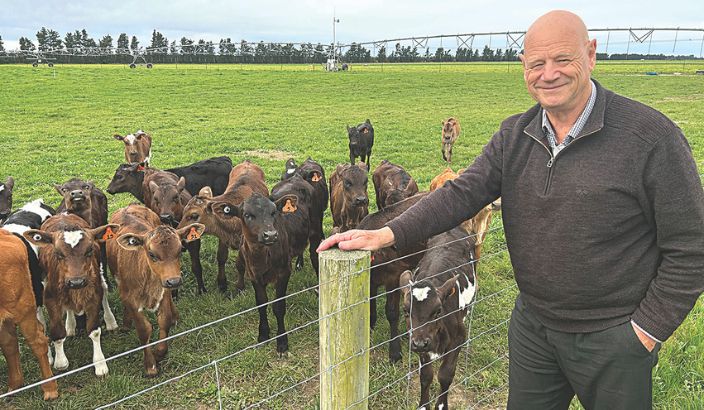The hidden key to productive pastures: nourishing the soil that feeds the herd


John Barnes, Managing Director and Founder of Fertilizer New Zealand. Photo: Supplied.
John Barnes, Fertilizer New Zealand
One of the largest ongoing costs for farmers is fertiliser, closely followed by pasture rejuvenation, which may involve reseeding or completely re-establishing the pasture. While these methods are often necessary, understanding the intricate relationship between soil health, fertilisation, and pasture growth is critical to maximizing both productivity and sustainability.
Understanding nutrient uptake: Applying fertiliser is only the first step in ensuring plants receive essential nutrients. To effectively reach plant roots, nutrients must be absorbed through a structured biological process. Just as the sun reliably rises in the east and sets in the west, nutrient absorption follows a natural and predictable system.
Soil biology plays a central role in this process. Beneficial microbes and fungi act as intermediaries, aiding nutrient uptake. However, intensive agricultural practices have depleted many of these essential organisms. Reintroducing beneficial microbes and fungi is therefore crucial for restoring soil functionality and optimizing pasture growth.
The role of mycorrhizal fungi in soil health: Mycorrhizal fungi are key contributors to plant nutrition. These specialised fungi form symbiotic relationships with plant roots, extending their network to access vital nutrients. Acting like a foraging team, the fungi seek out minerals and elements required for plant growth, which they then transfer to the roots. In return, plants supply these fungi with surplus proteins, fuelling their growth and expanding their reach. This mutual exchange creates a sustainable cycle that promotes robust plant development and healthier pastures.
Microbes and nutrient solubilization: Beyond fungi, other microbes assist in breaking down fertiliser components into forms plants can readily absorb. Phosphate-solubilising bacteria integrate phosphorus into the soil, preventing nutrient loss through leaching and ensuring long-term availability. Similarly, nitrogen-fixing bacteria convert atmospheric nitrogen into usable forms, reducing the need for synthetic fertilisers.
Sustaining a productive pasture typically requires around 200 kg of nitrogen per hectare annually. Under ideal conditions, healthy soils can naturally provide this nitrogen. However, due to microbial depletion in many farming systems, artificial fertilisers become a necessity—often leading to inefficiencies and environmental concerns.
Research insights from Lincoln University’s Ashley Dene Health Farm: A study conducted at the Ashley Dene Health Farm at Lincoln University highlights the effectiveness of microbial and fungal applications in sustainable farming practices. The study compared two farms: A conventional farm applying 148 kg of nitrogen per hectare per season, yielding 89 kg of dry matter per kg of nitrogen applied.
And A microbial-enhanced “health farm” applying only 73.7 kg of nitrogen per hectare per season—50% less than the conventional farm—yet yielding 147 kg of dry matter per kg of nitrogen applied.
These findings suggest that fostering soil microbial life significantly increases efficiency, reducing nitrogen loss, improving plant nutrient uptake, and minimizing environmental runoff.
Benefits beyond the soil: A well-balanced nutrient system extends benefits beyond soil and plant health—it also impacts livestock and overall farm economics. Reduced nitrogen excess in pasture translates to lower nitrogen levels in milk, contributing to a healthier dairy product. Moreover, a combination of beneficial microbes and fungi has been shown to boost crop yields significantly. Independent studies indicate a 25% increase in swede crop yields, translating to a net gain of approximately $600 per hectare at an investment of less than $100 per hectare in microbial treatments such as VitaLife.
Conclusion: Feeding the soil is just as vital as feeding the livestock that graze upon it. By harnessing the power of natural soil biology, farmers can enhance nutrient availability, decrease reliance on synthetic fertilisers, and improve farm sustainability. Investing in soil microbes and fungi is more than an environmental initiative—it is a sound economic decision that ensures long-term agricultural success.
